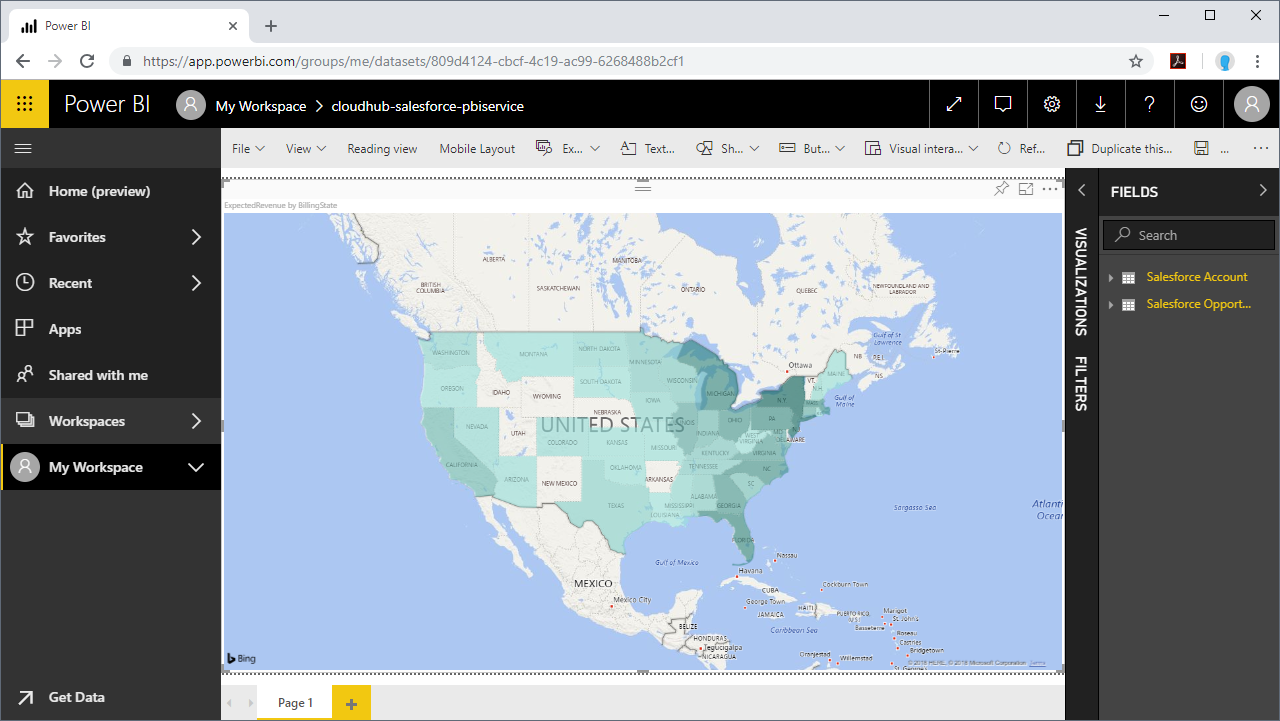Discover how a bimodal integration strategy can address the major data management challenges facing your organization today.
Get the Report →Visualize Live IBM Cloud Object Storage Data in the Power BI Service
Use CData Connect Server to create a virtual SQL Server database for IBM Cloud Object Storage data and create custom reports in the Power BI Service.
Power BI transforms your company's data into rich visuals for you to collect and organize so you can focus on what matters to you. When paired with CData Connect Server, you get instant access to IBM Cloud Object Storage data for visualizations, dashboards, and more. This article shows how to build and publish a dataset from IBM Cloud Object Storage data in Power BI and then create reports on IBM Cloud Object Storage data in the Power BI service.
CData Connect Server provides a pure SQL interface for IBM Cloud Object Storage, allowing you to easily build reports from live IBM Cloud Object Storage data in Power BI — with no need to replicate the data. As you build visualizations, Power BI generates SQL queries to gather data. Using optimized data processing out of the box, CData Connect Server pushes all supported SQL operations (filters, JOINs, etc) directly to IBM Cloud Object Storage, leveraging server-side processing to quickly return IBM Cloud Object Storage data.
NOTE: You can also import IBM Cloud Object Storage data into Power BI through Connect Server (instead of using the on-premise gateway). Read how in the related Knowledge Base article.
Create a Virtual SQL Database for IBM Cloud Object Storage Data
CData Connect Server uses a straightforward, point-and-click interface to connect to data sources and generate APIs.
- Login to Connect Server and click Connections.
![Adding a connection]()
- Select "IBM Cloud Object Storage" from Available Data Sources.
-
Enter the necessary authentication properties to connect to IBM Cloud Object Storage.
Register a New Instance of Cloud Object Storage
If you do not already have Cloud Object Storage in your IBM Cloud account, follow the procedure below to install an instance of SQL Query in your account:
- Log in to your IBM Cloud account.
- Navigate to the page, choose a name for your instance and click Create. You will be redirected to the instance of Cloud Object Storage you just created.
Connecting using OAuth Authentication
There are certain connection properties you need to set before you can connect. You can obtain these as follows:
API Key
To connect with IBM Cloud Object Storage, you need an API Key. You can obtain this as follows:
- Log in to your IBM Cloud account.
- Navigate to the Platform API Keys page.
- On the middle-right corner click "Create an IBM Cloud API Key" to create a new API Key.
- In the pop-up window, specify the API Key name and click "Create". Note the API Key as you can never access it again from the dashboard.
Cloud Object Storage CRN
If you have multiple accounts, you will need to specify the CloudObjectStorageCRN explicitly. To find the appropriate value, you can:
- Query the Services view. This will list your IBM Cloud Object Storage instances along with the CRN for each.
- Locate the CRN directly in IBM Cloud. To do so, navigate to your IBM Cloud Dashboard. In the Resource List, Under Storage, select your Cloud Object Storage resource to get its CRN.
Connecting to Data
You can now set the following to connect to data:
- InitiateOAuth: Set this to GETANDREFRESH. You can use InitiateOAuth to avoid repeating the OAuth exchange and manually setting the OAuthAccessToken.
- ApiKey: Set this to your API key which was noted during setup.
- CloudObjectStorageCRN (Optional): Set this to the cloud object storage CRN you want to work with. While the connector attempts to retrieve this automatically, specifying this explicitly is recommended if you have more than Cloud Object Storage account.
When you connect, the connector completes the OAuth process.
- Extracts the access token and authenticates requests.
- Saves OAuth values in OAuthSettingsLocation to be persisted across connections.
![Configuring a connection (SQL Server is shown).]()
- Click Save Changes
- Click Privileges -> Add and add the new user (or an existing user) with the appropriate permissions.
Connecting to Connect Server from Power BI
To connect to and visualize live IBM Cloud Object Storage data in the Power BI service), install the on-premises data gateway, add a data source to the gateway from the Power BI service, and publish a dataset from Power BI Desktop to the service.
Install the On-Premises Data Gateway
The Microsoft on-premises data gateway provides secure data transfer between connected data sources and various cloud-based Microsoft tools and platforms. You can read more about the gateway in the Microsoft documentation.
You can download and install the gateway from the Power BI service:
- Log in to PowerBI.com.
- Click the Download menu and click Data Gateway.
![Download the Data Gateway]()
- Follow the instructions for installation, making note of the name of the gateway.
Add IBM Cloud Object Storage as a Data Source to the Power BI Service
Once you have installed the data gateway, you add Connect Server as a data source to the Power BI service:
- Log in to PowerBI.com.
- Click the Settings menu and click "Manage gateways."
![Settings -> Manage gateways]()
- Click "ADD DATA SOURCE" and configure the connection to Connect Server:
- Set Data Source Name Connect_IBMCloudObjectStorage.
- Choose SQL Server as the Data Source Type.
- Set Server to the address of your Connect Server instance (i.e.: connect_server_url).
- Set Database to the name of your virtual IBM Cloud Object Storage database (i.e.: IBMCloudObjectStorage1).
- Set Authentication Method to Basic.
- Set Username and Password to Connect Server credentials.
Publish a Dataset from Power BI Desktop
With the gateway installed and Connect Server added as a datasource to the Power BI service, you can publish a dataset from Power BI Desktop to the service.
- Open Power BI, click Get Data -> More, then select SQL Server database, and click Connect.
- Set the connection properties and click OK.
- Set Server to the address of your Connect Server instance (i.e.: connect_server_url).
- Set Database to the name of your virtual IBM Cloud Object Storage database (i.e.: IBMCloudObjectStorage1).
- Set Data Connectivity mode to DirectQuery*.
![Connect to CData Connect Server instance]() * DirectQuery enables live query processing and real-time visualizations of IBM Cloud Object Storage data.
* DirectQuery enables live query processing and real-time visualizations of IBM Cloud Object Storage data.
- In the authentication wizard, select Database, set the User name and Password properties, and click Connect.
- Select the table(s) to visualize in the Navigator dialog.
In the Query Editor, you can customize your dataset by filtering, sorting, and summarizing IBM Cloud Object Storage columns. Click Edit to open the query editor. Right-click a row to filter the rows. Right-click a column header to perform actions like the following:
- Change column data types
- Remove a column
- Group by columns
Power BI detects each column's data type from the IBM Cloud Object Storage metadata reported by Connect Server.
Power BI records your modifications to the query in the Applied Steps section, adjusting the underlying data retrieval query that is executed to the remote IBM Cloud Object Storage data. When you click Close and Apply, Power BI executes the data retrieval query.
Otherwise, click Load to pull the data into Power BI.
- Define any relationships between the selected entities on the Relationships tab.
- Click Publish (from the Home menu) and select a Workspace.
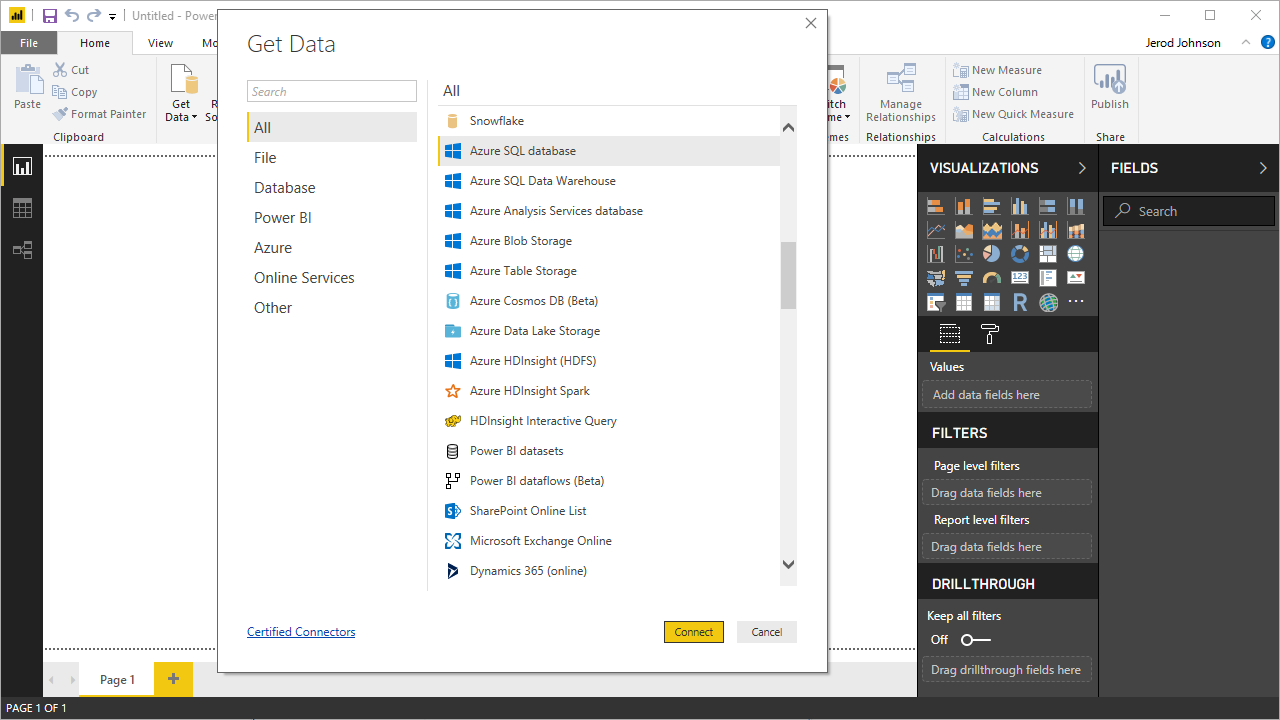
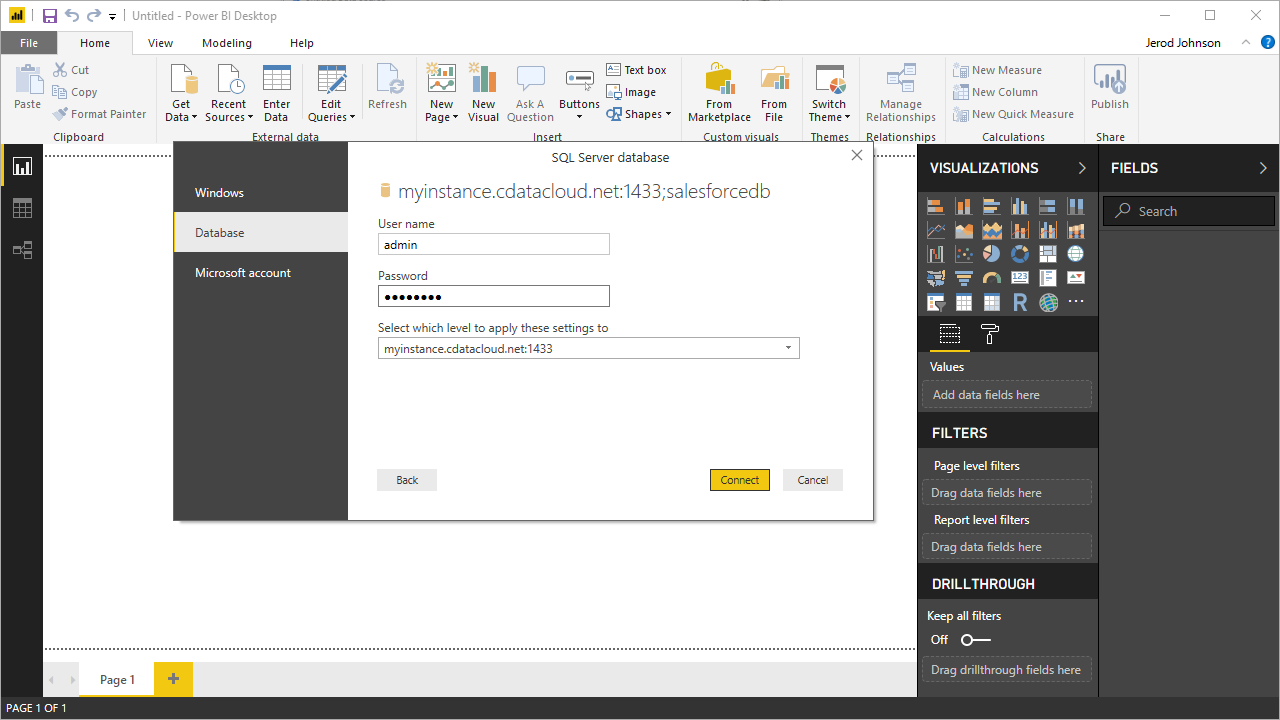
Build Reports and Dashboards on IBM Cloud Object Storage Data in the Power BI Service
Now that you have published a dataset to the Power BI service, you can create new reports and dashboards based on the published data:
- Log in to PowerBI.com.
- Click Workspaces and select a workspace.
- Click Create and select Report.
- Select the published dataset for the report.
![Select a dataset]()
- Choose fields and visualizations to add to your report.
![Visualizing IBM Cloud Object Storage data in the Power BI service]()
SQL Access to IBM Cloud Object Storage Data from Cloud Applications
Now you have a direct connection to live IBM Cloud Object Storage data from the Power BI service. You can create more data sources and new visualizations, build reports, and more — all without replicating IBM Cloud Object Storage data.
To get SQL data access to 200+ SaaS, Big Data, and NoSQL sources directly from your cloud applications, see the CData Connect Server.








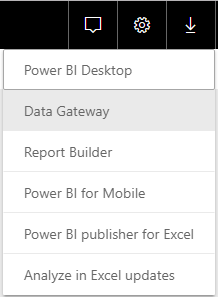
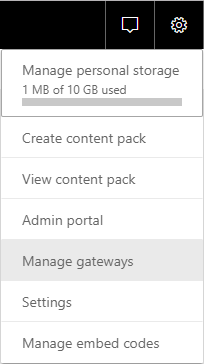
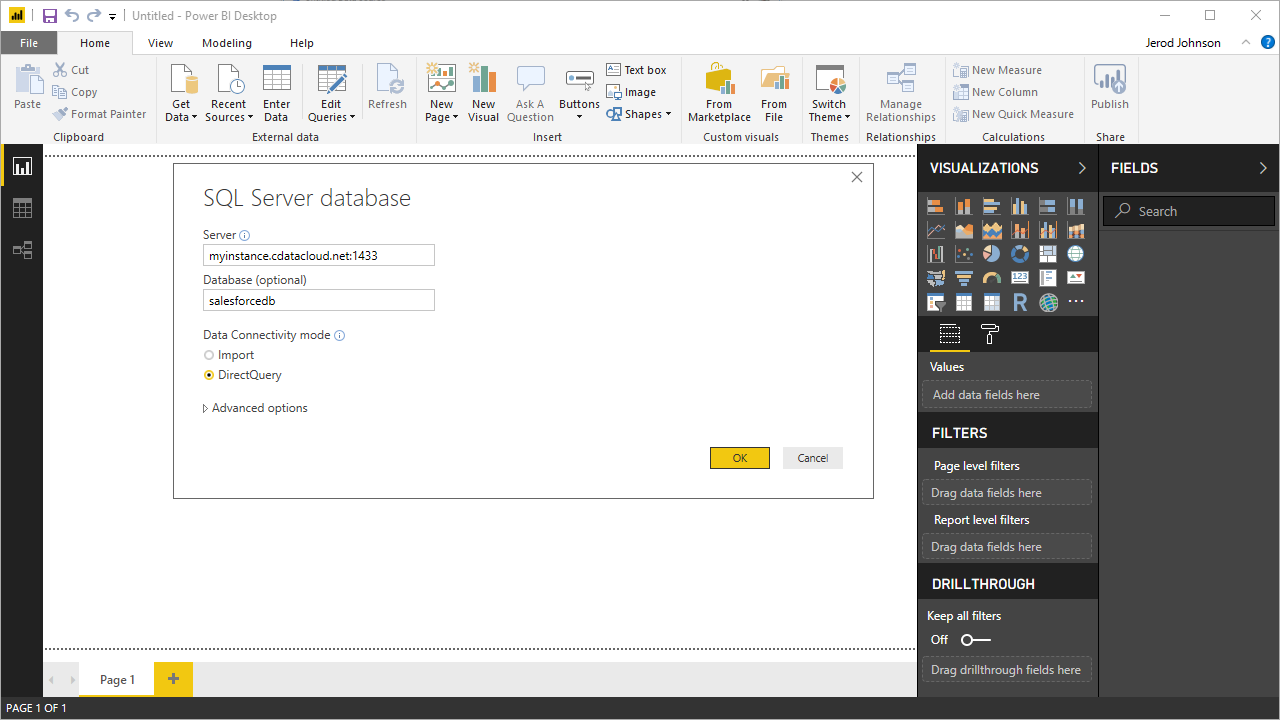 * DirectQuery enables live query processing and real-time visualizations of IBM Cloud Object Storage data.
* DirectQuery enables live query processing and real-time visualizations of IBM Cloud Object Storage data.

